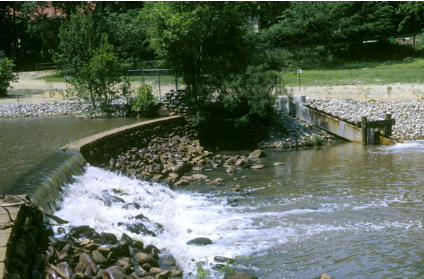HMHS students conducted a water test along the Cooper River on May 27th, 2025, which showed the river is faring reasonably well, though there are signs of increasing stress from pollutants.
The water temperature was measured at 17.15 Celsius, and the pH was 6.95—all normal for a healthy freshwater system. Clarity was moderate, with 35.6 cm turbidity, showing that there is some sediment in the water but nothing alarming.
Dissolved oxygen, which fish and other aquatic animals depend on, amounted to 6.18 ppm. That is sufficient to support the overwhelming majority of animals, but levels above that are not unfamiliar under unstressed water.
Nutrients were the largest red flag. The nitrates were calculated at 2.24 ppm, above normal but not quite at hazardous levels. The larger concern is the phosphates at 5.9 ppm—way above healthy. Extra phosphates are often the result of fertilizers, soaps, or runoff and will catalyze an algae bloom.
The study also found the total dissolved solids at 864 ppm, higher than usual at a typical river system, indicating runoff or other human activity. The stream flow came in at 0.68 ft/s, fast enough to maintain water flow to some extent and to water down some pollutants.
As a whole, the Cooper River is not at risk, but the higher levels of nutrients and dissolved solids are an indicator it’s going down the wrong path without tighter controls over runoff and ongoing monitoring.








